Group Divisor and Factor Group Base
Learn more about how the group divisor and factor group base affect the element numbers.
What are the Group Divisor and Factor Group Base?
The group devisor as well as the Factor group base are a significant part of SOFiSTiK’s numbering system. Both define the final element number of every single element along with the specified group number as well as the automatic consecutive numbering.
Definition of Group Divisor and Factor Group Base.
The group divisor can be defined in the “SOFiSTiK: System Information” dialog box and 2 options are available:
- Fixed
The group number of a single element is defined by the integer division of the element number by the group divisor. - Automatic
When using the option “Automatic”, it is unnecessary to define base values. However, it is essential to set up the integer multiple, which will be the base of the element numbers of the next group.
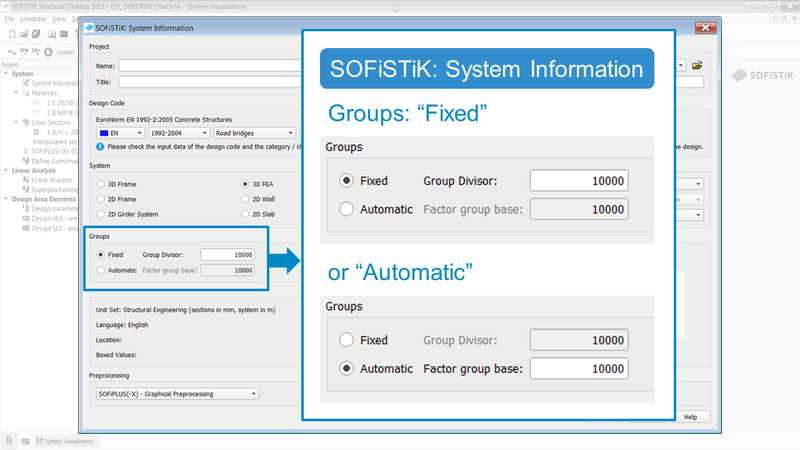
Option 1: Fixed
The behaviour of this setting will be demonstrated on a simple structural line of a total length of 11m and a partition of 11 elements. The group number is set to 1.

The selected group divisor is 10.
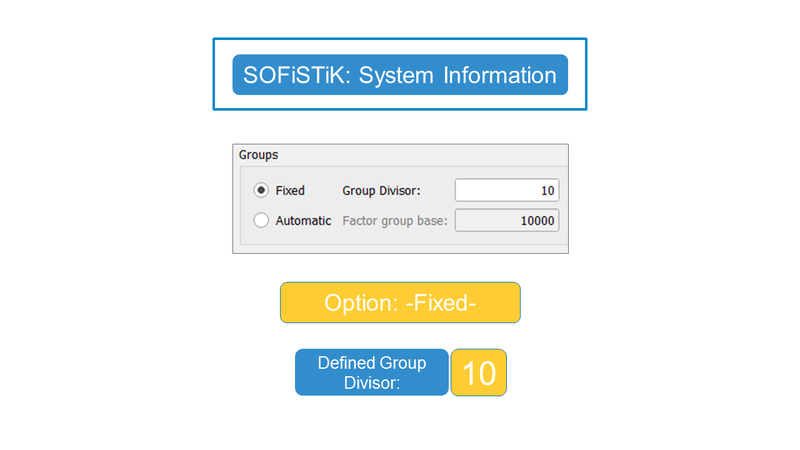
Exporting the structural line will end up in an error message.
Before understanding the error message to figure out a solution, let’s have a look at what exactly happened during the export.
The graphic shows the elements and their information after the failed export. The horizontal line represents the finite elements or beam elements. The numbers 1001, 1002, and so on are the node numbers. The two-digit numbers are the element numbers and related to the group divisor. The single-digit numbers represent the assigned group numbers.
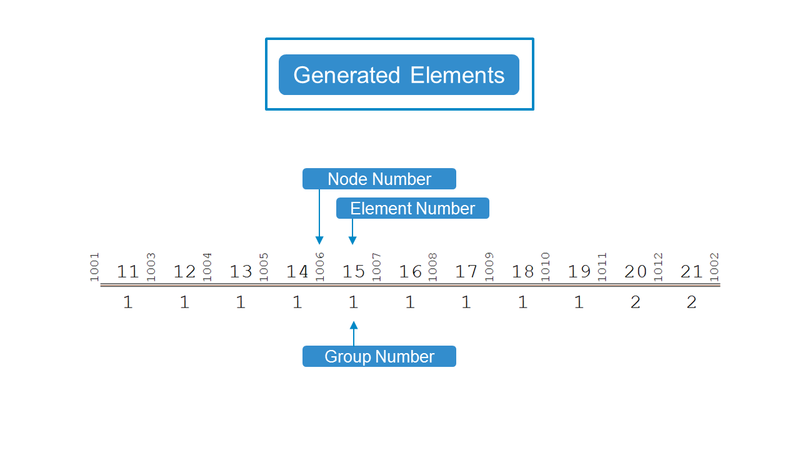
You might have already recognised the graphic shows as well a group number 1 and 2. This is a part of the error message when exporting the structural line.
Let’s find out what exactly happened. You remember a group divisor 10 and a group number of 1 were defined. This gives a possible maximum of 9 elements. 9, because the software starts counting with 1 and ends up at 9.
In this specific example the required number of elements is 11, so 2 elements need to be shifted to the next group number. In this case group number 2.
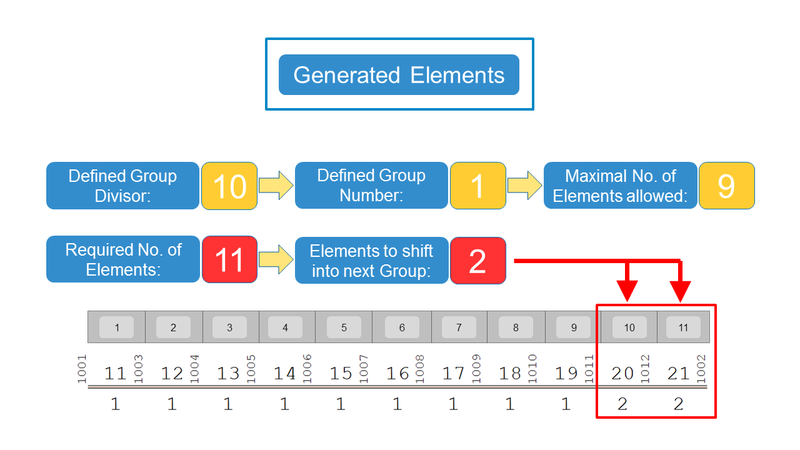
Let’s jump back to the error message and break down the information it gives us. It says 21 elements in group 1 aren’t allowed because it exceeds the maximum of 19. What makes sense. Only 9 numbers within group 1 are available, from 11 to 19.
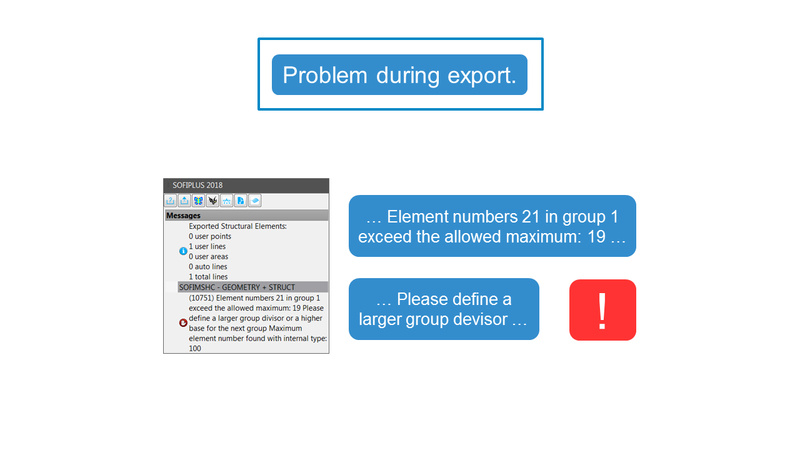
The second part of the message suggests a solution. It says to increase the group divisor. Therefore, a modification in the SOFiSTiK: System Information dialog box is necessary.
Setting the group divisor to 100 to allows assigning 99 elements within group number 1. The first number of the elements starts with 101, the second 102 up to 111. Moreover, and this is important, all elements are assigned to group number 1.
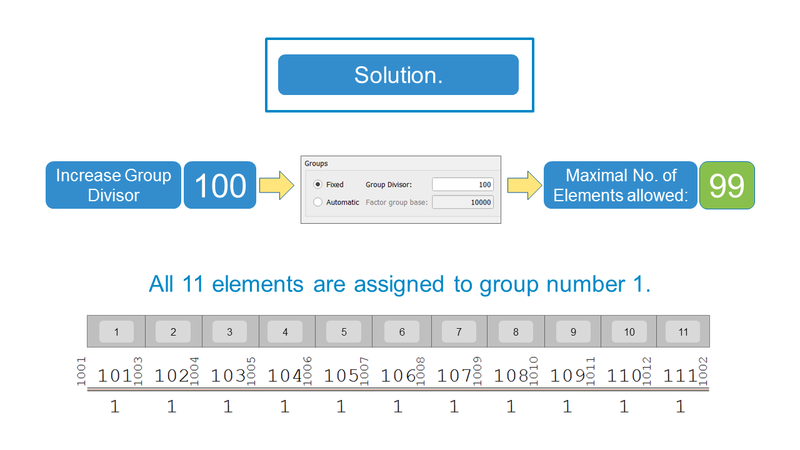
The numbering using the Option 1: Fixed works as the following:
The group divisor multiplied by the group number defines the base of the numbering. Adding the automatic numbering of each single element results in the final element number.
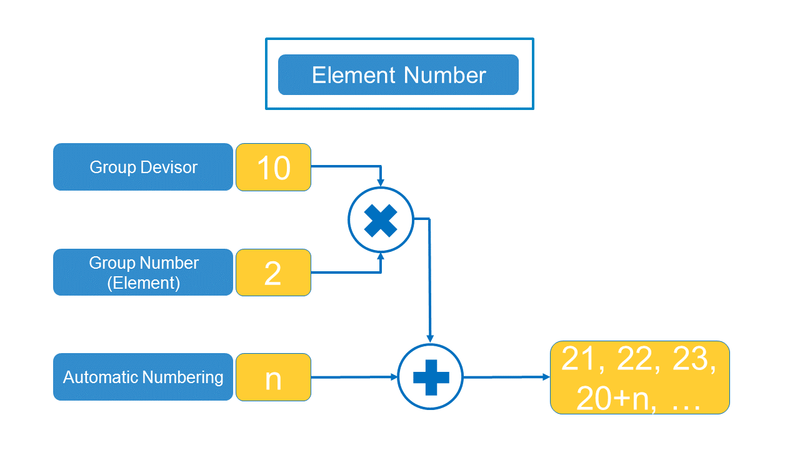
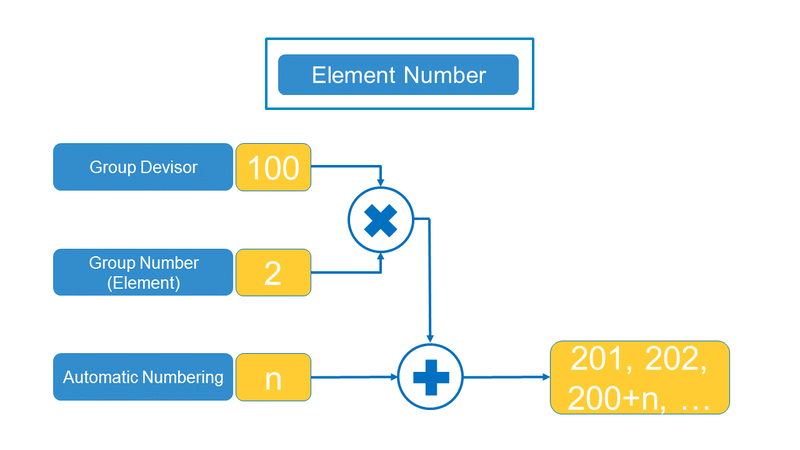
Option 2: Automatic
When using the option “Automatic”, it’s unnecessary to define base values. However, it is essential to set up the integer multiple, which will be the base of the element numbers of the next group.
To demonstrate the automatic option, it makes sense to set up two different Factor group bases. In the following example, 10 and 100 are used.
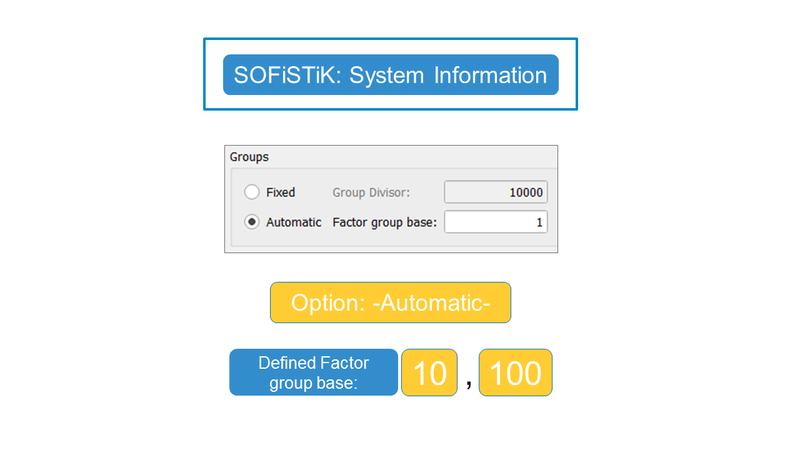
Two structural lines, the first one shows a total length of 12m and 12 elements, the second is 11m in total, with 11 elements. For both of the structural lines different
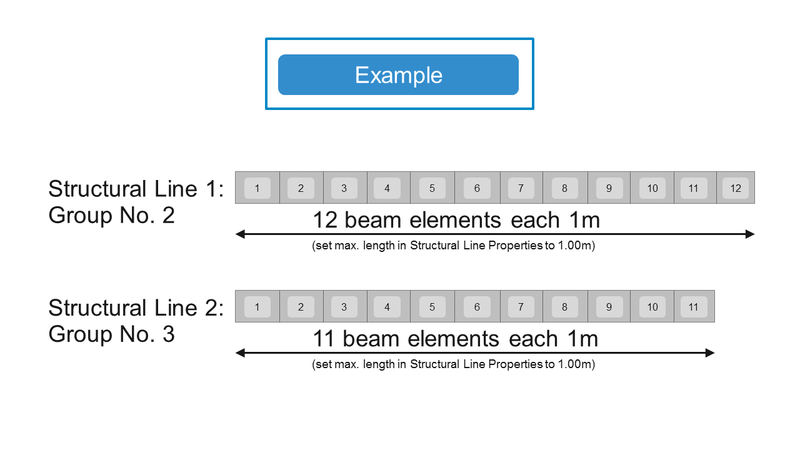
Factor Group Number “10”
The first thing to mention, there is no error message when exporting the structural lines. The reason is, the element numbers aren’t longer explicitly defined with a fixed group prefix.
The first beam number of the upper structural line is 11 the last 22, and all beams are assigned to group number 2.
The first beam number of the lower structural line is 31, because 10 was chosen as factor group base, so the software uses 10 as the integer multiple to evaluate the start number of the elements of the next group. In this specific example the numbering starts at 31 and ended at 41.
You might recognise that the element number isn’t longer related to the defined group as it was in the fixed option.
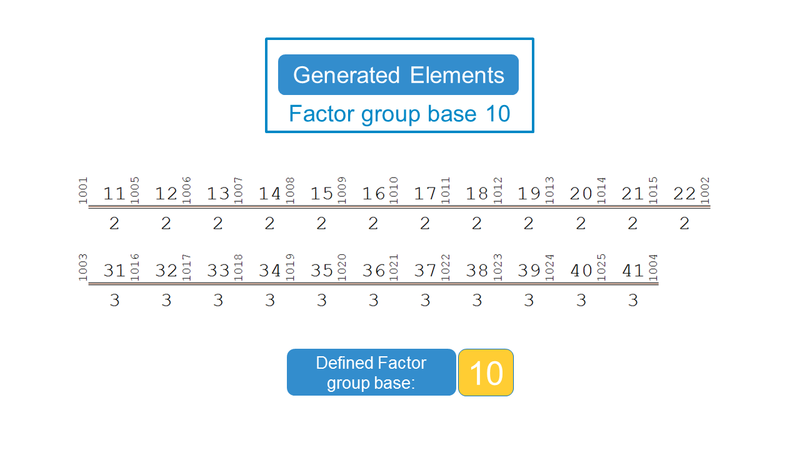
Factor group number “100”
When changing the factor group base to 100 the numbering of the upper structural line starts at 101 and end up at 111. However, the numbering of the lower structural line goes from 201 to 211. Again, because the factor group base was chosen by 100, the numbering of the new elements in the next group starts at 201.
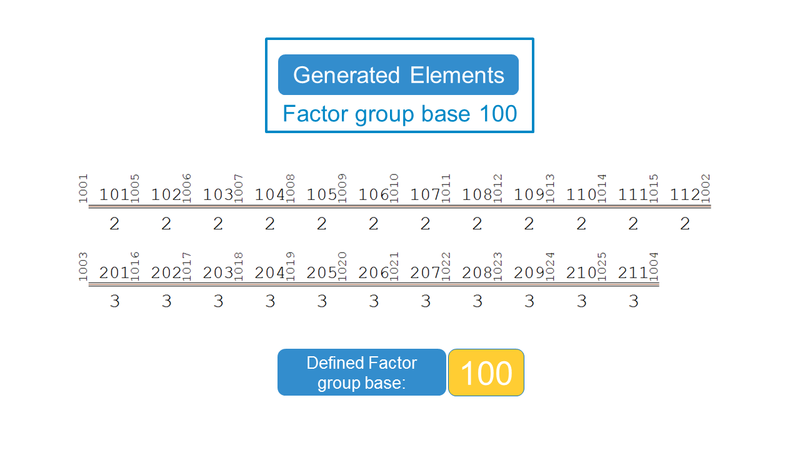
In option 2 “Automatic”, factor group base, the numbering system works slightly different. New elements of a different group are starting in reliance of the factor group base.
It means if the factor group base was chosen by 10 and the last element number within a group is 22 the element number of the following group is 31. So, it starts with the next ten.
If 100 was chosen for the factor group base, and the last element was 112, the element number of the following group is 201. So the next hundred.
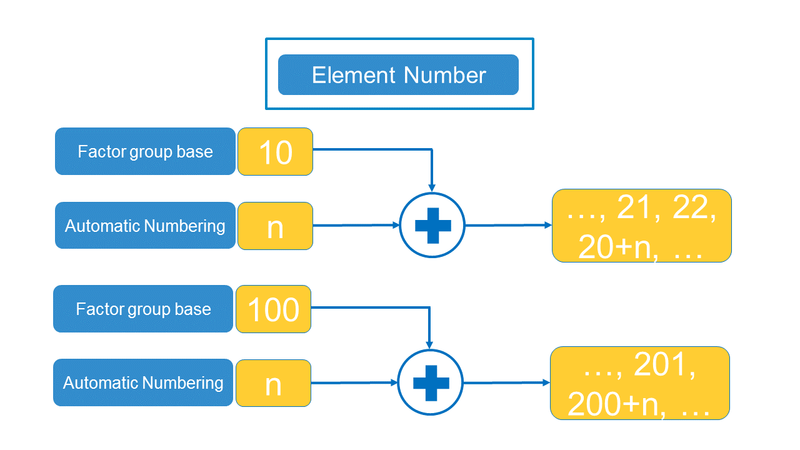
Try the above by setting up the described examples and use a few different group divisor as well factor group base to learn how they affect the element numbers.
Software version used for this post: SOFiSTiK FEA v2018-03.
